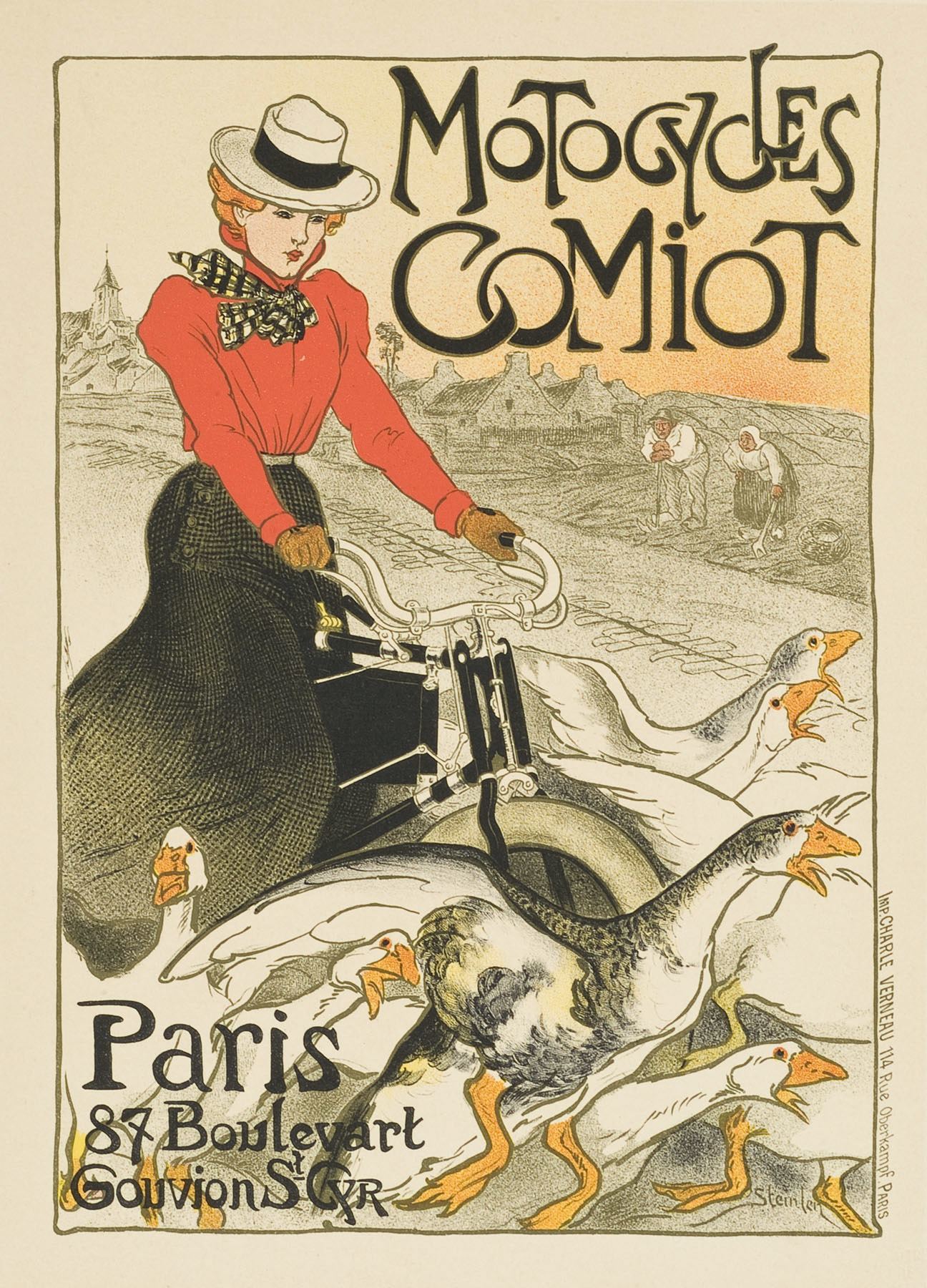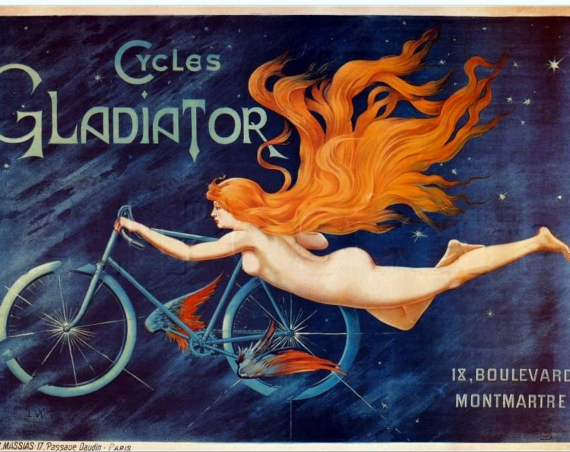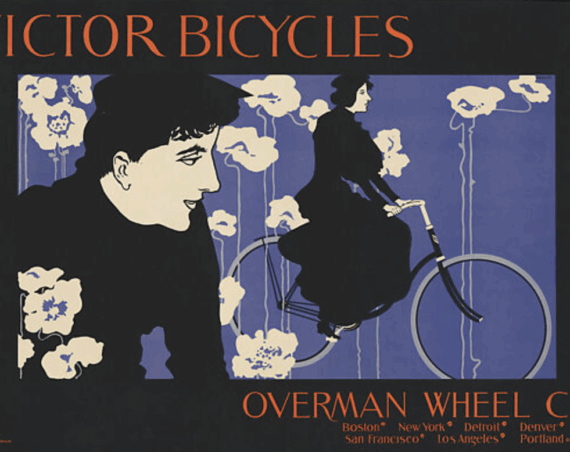Discover how Jules-Alexis Muenier’s iconic poster captured the spirit of technological innovation and freedom in the early 20th century.
Introduction
In the dawn of the 20th century, as motorcycles began revolutionizing personal transportation, a remarkable piece of advertising art emerged. The 1903 ‘Motocycles Comiot’ poster, created by French artist Jules-Alexis Muenier, stands as a testament to an era of rapid technological advancement and social transformation.
The Artist and His Vision
Jules-Alexis Muenier, a French artist known for his keen eye for dynamic composition, created this masterpiece during a pivotal moment in transportation history. His artistic interpretation perfectly captured the excitement and technological optimism that defined the period.
Design Analysis
Dynamic Composition
The poster’s focal point is a motorcyclist in motion, leaning forward with determination. Muenier’s bold, decisive lines emphasize:
- Speed and momentum
- The rider’s confident control
- The motorcycle’s powerful presence
Color Palette and Visual Elements
The artwork demonstrates masterful use of color psychology:
- Rich, warm tones including deep reds and browns
- Cooler, subdued background hues
- Motion blur effects that enhance the sense of speed
- Art Nouveau-influenced typography that harmoniously integrates with the image
Historical Context and Significance
Technological Revolution
The early 1900s marked a transformative period in transportation:
- Motorcycles emerged as symbols of modernity
- Personal mobility became increasingly accessible
- New engineering achievements captured public imagination
Marketing Innovation
The Comiot poster represented more than just advertising:
- It showcased the motorcycle as a symbol of personal freedom
- Positioned Comiot as a forward-thinking brand
- Demonstrated the marriage of art and commerce in early 20th-century marketing
The Legacy of Motocycles Comiot
While perhaps not as widely recognized as some contemporary bicycle advertisements, the Comiot poster exemplifies how early 20th-century advertising art embraced technological progress. Muenier’s bold design helped establish Comiot as an innovative brand, perfectly capturing the motorcycle’s appeal as a symbol of speed, freedom, and innovation.
Cultural Impact
The poster reflects several key aspects of early 20th-century society:
- Growing fascination with speed and technology
- Changing attitudes toward personal transportation
- The rise of advertising as an art form
- The emergence of motorcycle culture
Modern Relevance
Today, the ‘Motocycles Comiot’ poster continues to inspire:
- Collectors of vintage advertising art
- Motorcycle enthusiasts
- Design historians
- Students of early 20th-century culture
Conclusion
The 1903 ‘Motocycles Comiot’ poster represents more than just a marketing tool – it captures a moment of transformation in human mobility and artistic expression. Through Muenier’s masterful composition and understanding of his subject, the poster continues to resonate as a powerful symbol of innovation and freedom.



